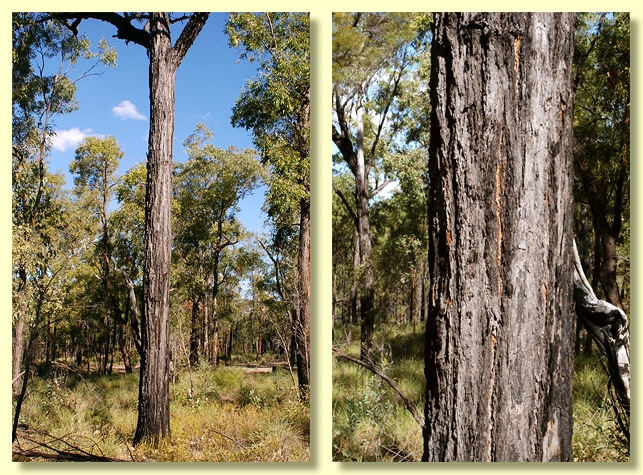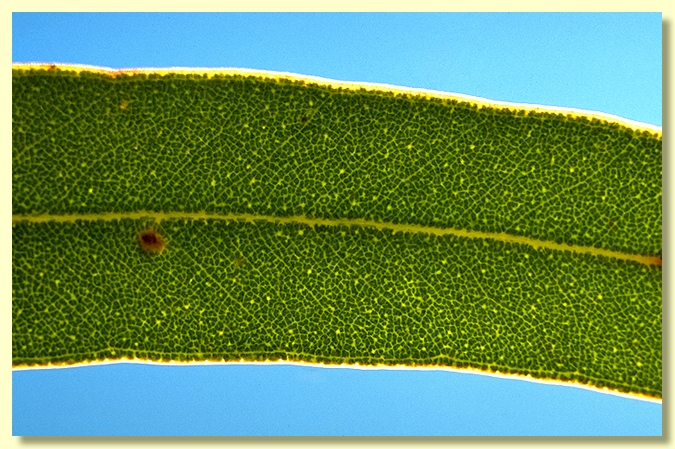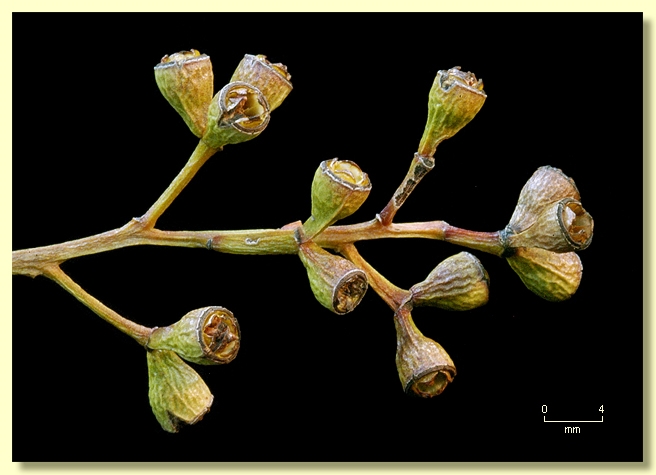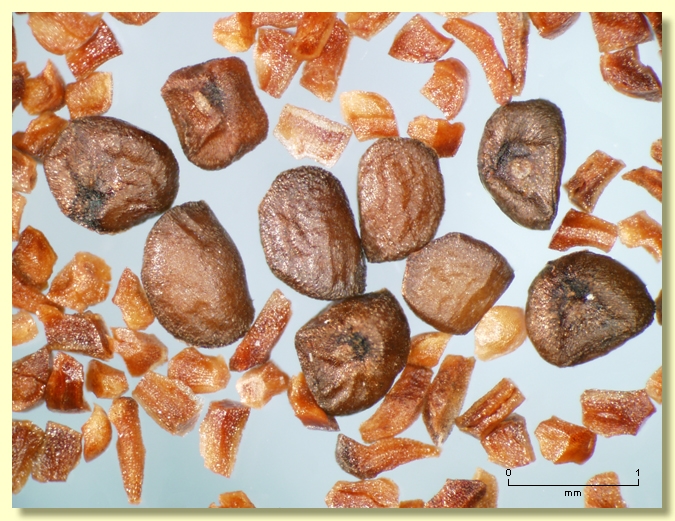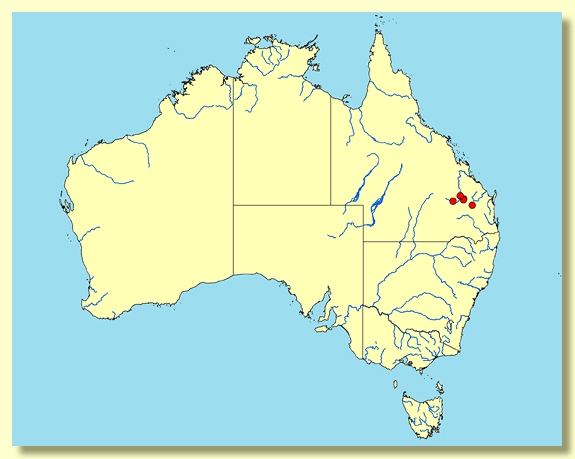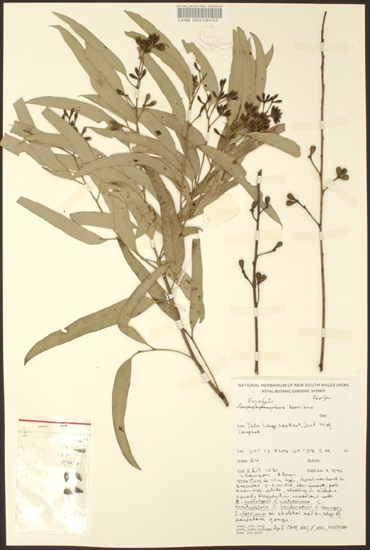Euclid - Online edition
Eucalyptus beaniana
Eucalyptus | Symphyomyrtus | Adnataria | Apicales | Siderophloiae | Subglaucae
Small tree to 10 m tall, occasionally taller to 15 m. Forming a lignotuber.
Ironbark dark grey to black, normally rough-barked to the small branches, occasionally smooth-barked on branches less than 6 cm diameter.
Juvenile growth (coppice or field seedlings to 50 cm): stem square or rounded in cross-section; juvenile leaves shortly petiolate, alternate, linear, 5.5–9 cm long, 0.4–0.6 cm wide, base tapering to petiole, dull, green.
Adult leaves alternate, petiole 1–2.5 cm long; blade lanceolate to falcate, 7–13 (17) cm long, 0.9–2.3 cm wide, base tapering to petiole, concolorous, dull, green to blue-green, side-veins at an angle less than 45° to midrib, densely reticulate, intramarginal vein parallel to and just within margin, oil glands sparse intersectional.
Inflorescence terminal compound, sometimes a few axillary compound also and possibly some axillary single umbels, peduncles 0.5–1.1 cm long, buds 7 per umbel, pedicels (0.1)0.3–0.5 cm long. Mature buds clavate to fusiform to ± cylindrical, 0.4–0.7 cm long, 0.2–0.4 cm wide, scar usually present (first operculum sheds very early in bud development), operculum bluntly conical to rounded, stamens erect or irregularly flexed, anthers cuboid, adnate, slits or pores separate, style long, stigma blunt or pin-head shaped, locules 4, the placentae each with 4 vertical ovule rows. Flowers white.
Fruit on pedicels 0.2–0.7 cm long, cup-shaped, cylindrical or obconical, 0.4–0.6 cm long, 0.3–0.6 cm wide, discslightly raised, level or obliquely descending, valves 4, exserted.
Seeds brown, (1)1.2–1.8 mm long, flattened-ovoid, dorsal surface shallowly reticulate, hilum ventral.
Cultivated seedlings (measured at ca node 10): cotyledons small, reniform; stems square in cross-section; leaves always petiolate, opposite for 4–7 nodes then alternate, linear to narrowly lanceolate, 7.3–9.7 cm long, 0.4–0.9 cm wide, base tapering, dull, green, discolorous.
Flowering has been recorded in September.
A small ironbark tree known from four localities in south-east Queensland from an area west of Taroom, to the Isla Gorge National Park, to the area around Cracow and to an area south of Mundubbera. Characterised by its elongated more or less cylindrical buds with a bluntly acute to rounded operculum and linear juvenile leaves. Eucalyptus beaniana prefers sandstone hillsides and gorge country.
In the original description, E. beaniana was compared to E. decorticans. That species differs from E. beaniana by having conspicuously smooth-barked branches, diamond-shaped buds with an acute operculum and broader juvenile leaves. E. beaniana may also be close to E. taurina, E. ophitica and E. tholiformis. All four species have ± oblong to fusiform buds with a blunt conical to rounded operculum. They are weakly separated by the shape and size of their juveniles. E. beaniana has linear juveniles 0.4–0.6 cm wide, E. taurina has lanceolate juveniles 1.4–3 cm wide, E. ophitica has broadly lanceolate juveniles 3–7 cm wide, E. tholiformis has ovate juveniles 2.2–4 cm wide.
Within its area of occurrence it may be confused with two other closely related ironbarks, E. crebra and E. fibrosa. It differs from E. crebra by having more elongated buds with a round operculum, and fruit with slightly exserted valves. E. beaniana is much smaller in the buds, fruit and juveniles than E. fibrosa and lacks the long conical to horn-shaped operculum of that species.
All other ironbark species in the area of occurrence belong to the group of ironbarks where the buds have regularly flexed stamens and have an outer whorl of staminodes.
Eucalyptus beaniana is listed as "Vulnerable" under the Australian Government Environment Protection and Biodiversity Conservation Act 1999 (EPBC Act). Further information may be found at this web address:
http://www.environment.gov.au/cgi-bin/sprat/public/sprat.pl
MORE ABOUT IRONBARKS
Eucalyptus beaniana: named to honour Anthony Bean (1957-extant 2009). Tony Bean is a keen botanist working in the Queensland Herbarium who has studied Queensland plants for many years and who has a special interest in the eucalypts, particularly the ironbarks.


